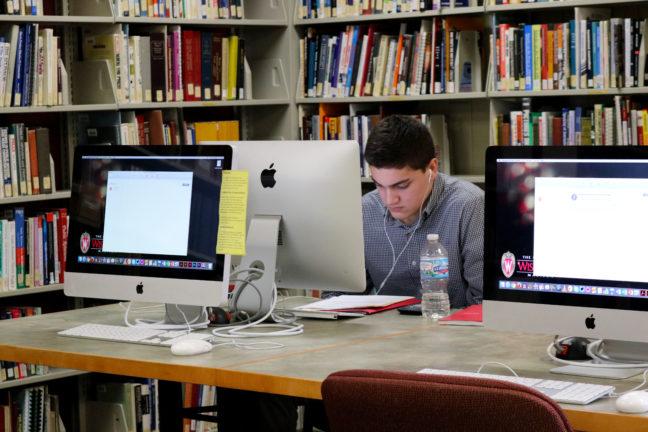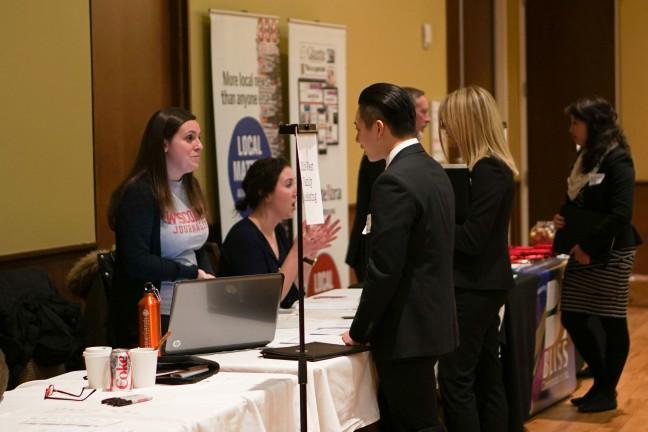Imagine you are standing on a moving walkway. You’re not walking on the belt — you’re just standing still. Some people blaze past you on the left, carried both by the walkway and their own steps. But not you. You’re still. Despite your inaction, you still move forward and you still eventually reach the same destination as the fast walkers.
This is how psychologist and higher education expert Beverly Daniel Tatum describes the ongoing cycle of racism.
“Active racist behavior is equivalent to walking fast on the conveyor belt … Passive racist behavior is equivalent to standing still on the walkway,” Tatum said. “No overt effort is being made, but the conveyor belt moves the bystanders along to the same destination as those who are actively walking. Some of the bystanders may feel the motion of the conveyor belt, see the active racists ahead of them, and choose to turn around … But unless they are walking actively in the opposite direction at a speed faster than the conveyor belt — unless they are actively anti-racist — they will find themselves carried along with the others.”
When Texas Tech University Health Sciences Center signed a decision in February to “discontinue all consideration of an applicant’s race and/or national origin” in admission policies, the prominent medical school established themselves as inactively complicit, firmly planting their feet on the “standing still” side of the walkway.
Madison sees historic ‘pink wave,’ but there’s still work to be done
The decision, which was made public Tuesday, is the first of its kind during the tenure of Education Secretary Betsy DeVos. It follows the Trump administration’s reversal of Obama-era affirmative action policies, which stipulated guidelines for the legal consideration of race in college admissions in the interest of increased diversity in schools.
The decision came after a complaint filed by the Center for Equal Opportunity — an anti-affirmative action, self-proclaimed “conservative civil rights” group — led to a 14-month investigation into the university’s use of race in admission decisions. CEO general counsel Roger Clegg said the decision will set a precedent for other universities to take the same steps.
“It shows that the Trump administration is serious about enforcing the civil rights laws in a way that protects the rights of all Americans to be free from discrimination,” Clegg said. “The more schools that stop using racial preferences, the harder it will be for other schools to continue using racial preferences.”
Combatting racial disparity in education now priority for increasingly diverse state government
Jin Hee Lee, the senior deputy litigation director at the National Association for the Advancement of Colored People Legal Defense and Educational Fund, advised that the decision is part of a broader trend of anti-affirmative action coming back into the limelight.
“In the larger context of this administration’s civil rights record, it’s clear that this is yet another attack on education equity,” Lee said. “We will continue to take steps to protect efforts aimed at improving educational equity throughout the country.”
Affirmative action policies are essential in the pursuit of educational equity in this country. In the context of the recent college admissions scandals at various prestigious institutions around the country, it can be easy to forget that the entire post-secondary education system is designed to benefit and uplift the most privileged and wealthy in our country, even in very simple ways. Affirmative action has played a major — and vital — role in equalizing the access to higher education.
Let’s be clear — College admissions have always favored the wealthy
To create truly equal access in education, the system need to make an active choice to do so. Any university which claims to be “race-blind” in admissions is, to put it simply, lying. In a system that has always favored wealthy white students, any admissions decision that fails to take that privilege into account will inherently use race as a factor in the decision. Every factor leading up to an admissions decisions incorporates race into the process, so any decision made as a result of those processes will, by extension incorporate race as well, regardless of intention.
This brings us back to the moving walkway. A university which claims to be race-blind might not be actively walking in the direction of the walkway, but by standing still they are allowing the walkway to carry them in a certain direction.
It’s simply not good enough to claim race-blindness in a society that has never been race-blind. Creating “equal opportunity” in education — which CEO maintains is its overarching goal — requires active work.
Universities have a duty to create access for students and prospective students, and they have a duty to critically examine how they might be more equally accessible to those from a variety of backgrounds. Anti-racism, anti-sexism, anti-homophobia — all activism needs to be an active choice. Otherwise, by definition, it’s not activism — it’s passivism. And passivism will only bring us further along the moving walkway, despite our best efforts to pretend it won’t.
Cait Gibbons ([email protected]) is a junior studying math and Chinese.














